Intentionally Empty Billboards Frame Views of Nature Instead of Ads
Some people say billboards are visual pollution. The entire city of São Paulo, Brazil even banned them, along with other forms of outdoor advertising, for over a decade, transforming the urban landscape to enhance emphasis on the city’s arts, architecture, and culture. Several U.S. states are billboard-free, too, like Vermont, Hawaii, and Alaska, and international movements to un-brand cities often include guerrilla art campaigns in which artists take over urban billboards, with or without official permission.
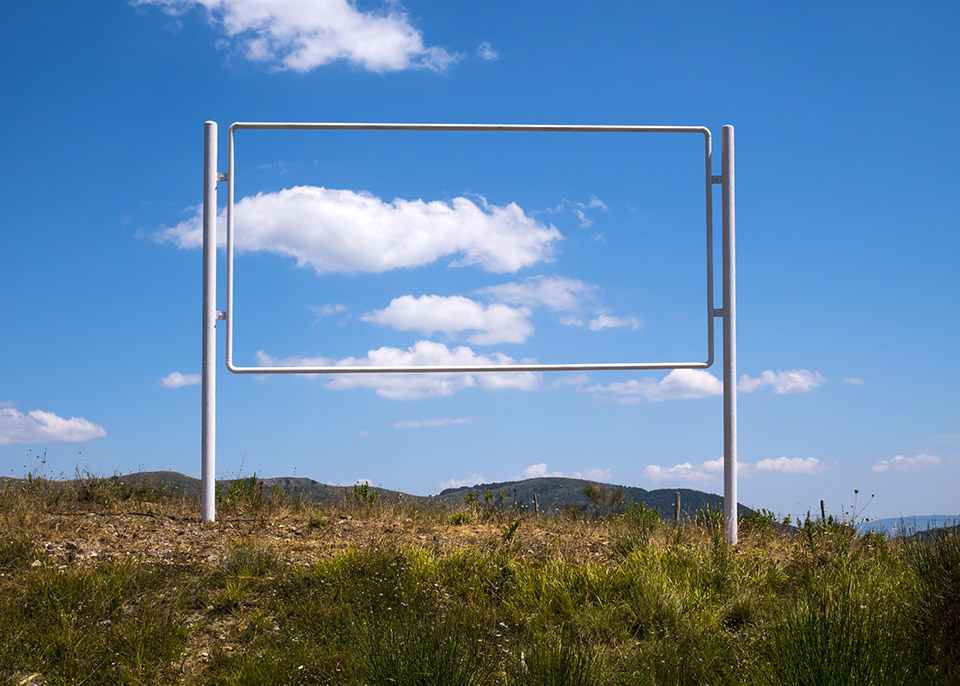
Perhaps we’ve grown so accustomed to the constant bombardment of advertising in public places that we sometimes don’t even register the billboards around us — or realize what they’re obscuring until they’re removed. The results of eliminating billboards can be dramatic anywhere, but consider how much more of an impact it would make in a rural area where these enormous ad platforms often get in the way of enjoying views of nature.

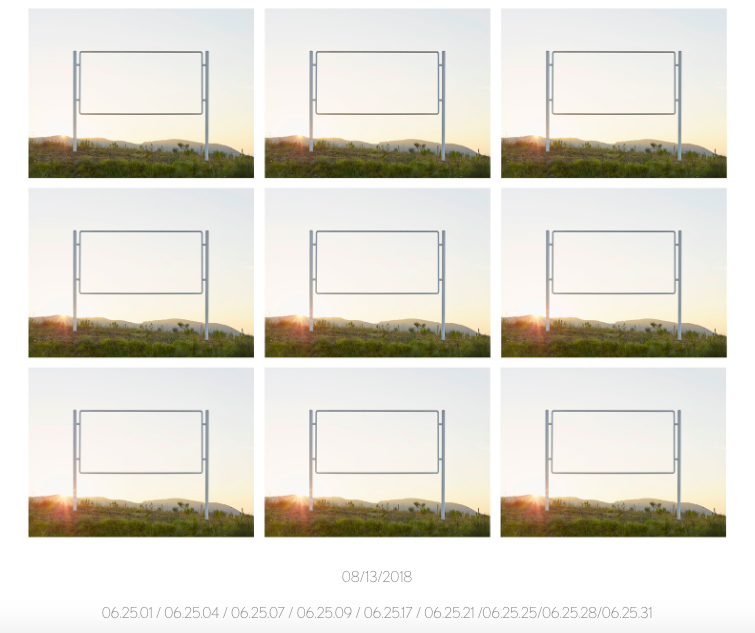
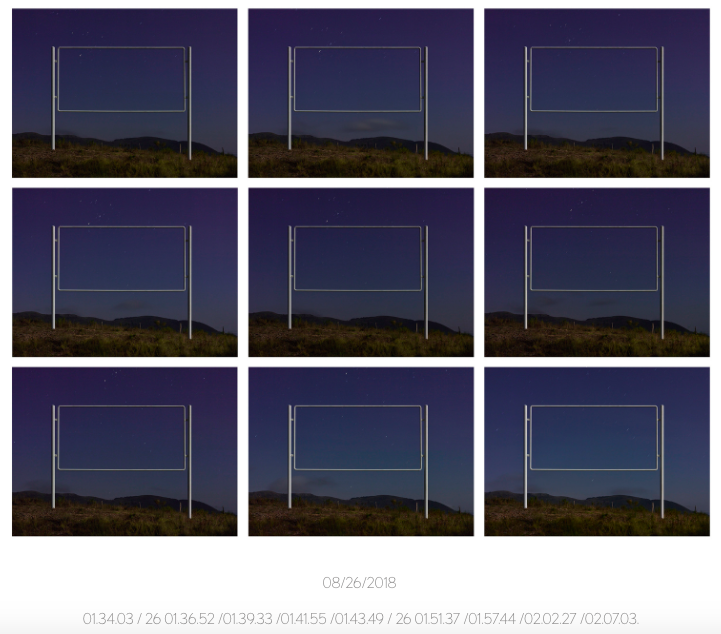
Milan-based photographer Maurizio Montagna offers us an opportunity to contemplate this possibility with Billboards, a series he’s been working on since 2003. Entitled “Latronico,” the latest iteration installs a billboard frame in the middle of an open landscape in the southern Italian town of the same name, located in the province of Potenza. Measuring about ten by twenty feet, the installation makes a big statement by saying nothing at all.
By removing the advertising altogether to frame photos of the scenery instead, the series calls attention to how ubiquitous large-scale outdoor advertising has become, and how it affects our perception of the world around us.
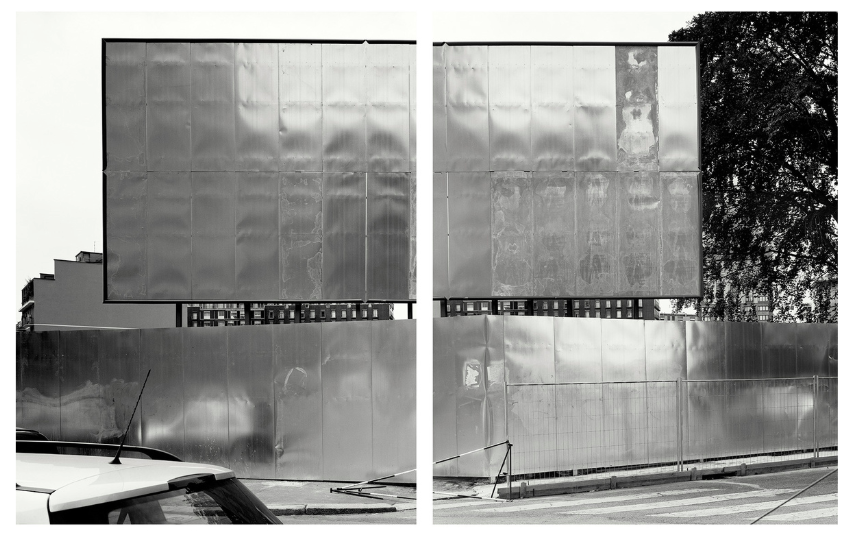
Previous installations in Montanga’s Billboards series have mimicked their surroundings in a sort of urban camouflage, or kept the white billboard backgrounds to highlight their blankness. As the project evolved, however, he began using the frames alone, capturing the results in stark black-and-white photographs. He explains his early choices in an interview with Landscape Stories:
“At the beginning the aspect I wanted to focus on was the emptiness. The first series of Billboards showed a strong connection between the surrounding space and the empty billboard. Later on, after a year, I realized that this absence was instead a very cumbersome presence located in the urban space. At this point, I started to ‘reduce’ the framing, in order to remove the surrounding context, and I chose to photograph a rectangular geometric space, as if I had to photograph an empty viewfinder.”
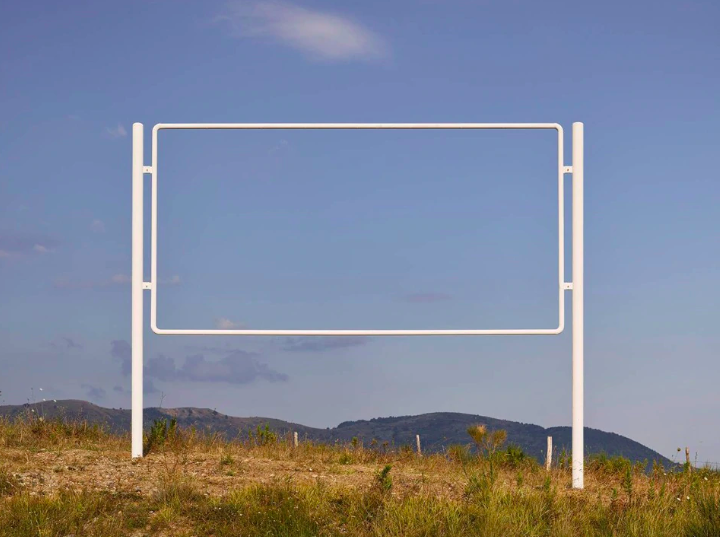

“At that point, I realized that the surrounding space beyond the signs did not interest me anymore. I think that the stratification of different meanings emerges from the simplicity of the project; the reality is already a container of many meanings, I have done nothing other than clean up the reality from the interference of the surroundings. I’ve done this also through the black and white choice, so sharp and clear. A subject like billboards, so bulky and heavy, had to be treated with the right lightness in order to get the right balance and not weigh down this continuous stream of empty signs too much.”
To see some more clever ways that artists have subverted billboards, check out French artist JR’s political spin on the platform, and concepts that transform existing billboard infrastructure into housing.




